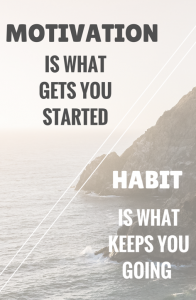Strategy #5: Build Capability – Mastery & Habits
Building capabilities is a central challenge, whether you are learning a new dance, learning new skills in a sport, learning algebra, developing relationship skills, learning to take care of yourself, etc. It is central to your life and will be throughout your adult years as well as your teenage years.
Where presidents of organizations get into the most trouble in leading change is failing to adequately develop the capabilities of the organization – what individuals are capable doing, what groups and teams are capable of doing and what the organization as a whole is capable of doing. For some reason they just don’t devote enough attention and resources to developing capability.
Don’t let that happen to you on your journey. One of the advantages for focusing on building capabilities is because you have a lot of influence in doing so. You can make it happen.
A note on habits. Habits are part of the mastery process, but are broken out here because of their importance.
This is Where Much of Your Power Lies
Building Capability as a Teenager
The more you know about developing a range of capabilities, the better – now and as an adult because this is a life-long challenge. As a teenager, you are naturally thrown into the unknown of the teenage years and out of the known world and safety of childhood. You face the need to develop an impressive range of new competencies – more than you will face at any other point in your life.
That Requires Courage and Commitment
It requires courage simply to face all the competencies that are out there to build. It takes commitment – to yourself – to focus the attention and energy required and persevere.
That means taking responsibility for developing a lot of capabilities and not just relying on school or family. Schools and families will address some of the capabilities, but not all. You will need to fill in the gaps.
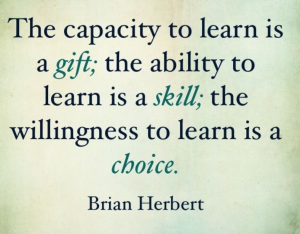
Building Capability in Organizations
In corporate change projects the challenge that sabotages more projects than any other is the failure to build capability. Businesses often define the desired future state, but then come up woefully short in helping people build the capability to be successful in that future state.
Consequently, most corporate change is disappointing because people resist leaving their known world – where they feel competent and safe – to enter the unknown in pursuit of a desired future where they might not be as competent or safe. Or they may simply get worn out trying to figure out how to do what’s required.
For Both Teenagers and Leaders of Change
There is little built into organizations that can adequately support the development of the required capabilities in major change initiatives. Therefore, it is up to leaders to commit to ensuring that those capabilities are built.
For teenagers, school (classroom and extra-curricular) provides some capability building, some families do a good job, some community organizations and faith communities build capabilities naturally and some jobs also build capabilities. However, teenagers need to commit to taking advantage of those opportunities and find ways to develop the capabilities not addressed in those settings – and there are a bunch. If you are unlucky enough to go to a poor school, live in a dysfunctional family and have few community connections, the challenge is a very tough one. Even if you have a lot of advantages, it’s still a tough challenge.
OK? Good? Master?
You Don’t Need to Master Everything
There are some skills or competencies that you only need to be OK at or good at. You really don’t need to be an expert at everything.
Same Path – How Far You Go Will Vary
The path of mastery that you travel will be the same, but how far you travel on it will vary. You don’t need to go far on the mastery path to be OK at a skill. You need to go further on the path to be good at it. To master a skill or competency requires that you travel a long way on the path.
But. whether you intend to master a skill, be good at or just OK at it, it’s important to understand the path you will be on. Understanding what to expect will go a long way in helping you navigate the path.
The Path of Mastery – The Basics
It’s a Journey
Remember that this is a journey and journeys happen over time – and they happen because we keep putting one foot in front of the other. Mastering competencies happens over time and with practice.
Getting to “OK” may not take too long or require too much practice and that will be enough with some capabilities. Getting to “good” will take a longer time and more practice, but will be worth it for other skills or competencies. “Mastery” will take a long time and a great deal of practice.
For both “good” and “mastery” you will need to “learn to love the plateau.” That is at the heart of mastery and is basically about dealing with the times when progress just flattens out and stays flat for a while despite your best efforts. Plateaus are covered below.
It Requires Practice
Competency doesn’t happen without practice, so try to see practice as a valuable activity that gets you what you want – not just something that you have to do. As hard as it is to feel warm and fuzzy about homework, homework is a form of practice that leads down the mastery path.
It is in practice that skills and competencies are built. In performing is where those skills and competencies are shown – but they develop primarily in practice.
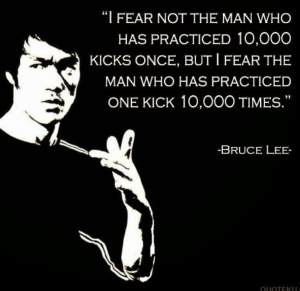
“Heroes Don’t Go Alone on the Journey”
The pursuit of mastery also benefits from having people who can teach, coach, mentor, tutor and generally support you. It also helps to have companions. In other words – in most cases – mastery is a team sport.
Danger – “ Getting Discouraged”
The biggest danger in pursuing mastery is getting discouraged. There are always times on the heroic journey when discouragement, sometimes even hopelessness, intrudes and that can sidetrack or end a journey if we aren’t ready. The keys are (1) to realize that mastery has a rhythm to it and (2) we have to “learn to love the plateau” and trust our practice.
“Learning to Love the Plateau” The Sneaky Challenge of Mastery
Some competencies are relatively easy to master, but most are not. The key is understanding the steps in the process of mastering something, particularly the unavoidable “plateaus”, when you just seem stuck.
The Rhythm of Mastery
The rhythm of mastery includes times when competency seems to be developing rapidly and it gets exciting as we make leaps. The practice obviously pays off. The natural rhythm of mastery also includes times when improvement just doesn’t seem to be happening – even when we practice as hard as ever. That’s the plateau and that’s where it is very easy to get discouraged, cut back on the practice and maybe even give up.
The Improvement Happens on the Plateaus
The weird thing about this is that the improvement happens on the plateaus, when we are often frustrated or discouraged – and shows up in the spurts of improved performance. This pattern is a natural repetitive part of the heroic journey, so expect it and don’t be discouraged by it. Learn to love the plateaus – where the improvement actually happens.
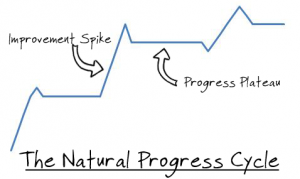
The Natural Steps in Mastery
How the Rhythm Plays Out
Performance Spurt
As we begin the process of mastery we often experience a spurt of increased ability that feels good and encourages more effort.
Hitting the Plateau
At some point following that initial spurt we hit a plateau where our ability doesn’t seem to improve despite continued, or even increased, effort. Sometimes there is even some loss of performance after a spurt.
It is on the plateaus where we basically have to trust in the process and in our practice and keep going even without the encouragement that obvious improvement provides. If we do, we almost always come to the next leap in competency – and we probably won’t be able to see it coming.
Warning! As that competence plateau extends despite efforts, it
becomes very easy to get discouraged and lose heart.
Drop Out?
Losing heart leaves us vulnerable to giving up or investing less effort – we can get stuck or drop out. The danger is not in getting stuck – because we can get out of the stuck places. The danger is in getting discouraged and dropping out of the mastery process.
Persevere?
If we persevere and focus on “right practice” vs. immediate outcomes, we eventually experience the next spurt in increased competence. It’s really that simple – but not easy at all.
Another Performance Spurt
It is usually impossible to see the spurt coming, which is one reason the mastery process is so tough and why perseverance and “right practice” is so important. But, if we persevere, the spurts in performance do happen.
Repeat
The pattern repeats. Hopefully, we learn from early plateaus and aren’t discouraged, so that persevering becomes a way of life and we get better and better at mastering the competencies we need.
One “Heads-up”
As we begin to master a competency the spurts can be less dramatic and the plateaus can get longer. The more we master a competency, the more this may prove to be true. Again, don’t be discouraged. It’s just the way it works. If we just want to be OK or good at something, this is not a big deal. However, if there is something we really want to master, this increasing challenge of plateaus will be a key issue.
“Our greatest glory is not in never falling but in rising every time we fall.”
Confucius
We Create Our Habits and Then Our Habits Create Us
A habit is a routine of behavior that (a) is repeated regularly and (b) tends to occur unconsciously.
Habits Save Energy and Time
Good ones make things easier. Bad ones make things harder. But good or bad – they save time and energy because they are unconscious. We don’t have to think about them, we just do act.
Bad Habits are Hard to Break
So, focus on good habits. Sometimes you can substitute a new habit for a bad habit, but often you will need help in breaking a bad habit. It’s just not easy. It’s usually wise to focus on developing good habits.
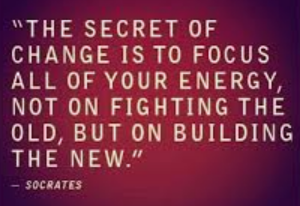
“Your beliefs become your thoughts, Your thoughts become your words, Your words become your actions, Your actions become your habits, Your habits become your values, Your values become your destiny.”
Mahatma
Gandhi
Seven Steps to Developing a Desired Habit
1. Make Sure it’s a Habit that You Want to Develop
Make sure it’s really something you want to do and you can see the benefit of it. These are your habits, so be the author. Don’t work on habits that don’t fit you.
2. Focus on the Small Steps (they can lead to big goals)
Start, do little bits and form the habit. Once started, it is easier to grow. Work on the small habit for as long as it takes to becomes a ritual (something you’re pulled towards rather than something that requires a lot of willpower).
Connect new habits to current habits or regular events. It helps develop a new habit when it can be linked to a current habit or a regular event. When I wake up in the morning, I do sit-ups before I get out of bed. It’s now automatic and I’ve done something before I even get out of bed. When I wanted to start a habit of reflecting on how I would conduct my day, I linked it to having coffee first thing (an existing habit).
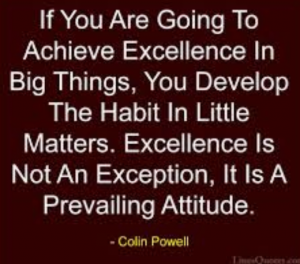
3. Simplify – Create Routines
If you want to be able to have more mental resources throughout the day – to form new habits or just be creative – it helps to identify those parts of your life that can be turned into routines that happen the same way or at the same time. This is really not restrictive. It’s actually quite freeing.
Routines help get rid of clutter – they make decisions easier. The idea is to have fewer decisions to make, so you aren’t wasting time and attention on decisions that you’re probably going to make pretty much the same way. Then you can focus on the decisions that really need some thought.
There are lots of examples and most of them are small – but they add up. For instance, you can:
- Put out your clothes for the next day in the same place at night and then, when you wake up sleep deprived, you just stumble over and put them on.
- Do the same thing for anything you need for school or work the next day. The added benefit here is that you will forget fewer things.
- Brush your teeth immediately after a meal.
- Do your laundry the same night each week (if you do your own laundry).
- As soon as you get home, review your calendar to make sure you haven’t missed recording anything (like assignments) and know what’s coming
- There are lots of other examples.
The grass isn’t greener on the other side – it’s greener where you water it.
Anonymous
4. Practice
That sounds simplistic, but practice is what builds the habit. Whether you feel like it or not, practice. If you are keeping your steps small, it’s not hard to practice even when you don’t feel like it. For more extensive habits, it might take more willpower.
5. Go Public and Get Support
This is surprisingly effective for a couple of reasons. First, telling someone about your desire to develop a new habit is a form of commitment – it’s out there now. Second, that person can be supportive and help keep the new habit going when it is young and vulnerable. You might find someone that also wants to develop a new habit and support each other.
"We are what we repeatedly do. Excellence then, is not an act, but a habit."
Aristotle
6. Give Yourself a Reward
If you practice well, take pride in it and give yourself a small reward that acknowledges your commitment.
7. Be Prepared to Break Your Habit
Setbacks, frustrations and failures can undo a good process of developing a habit. We’re human, so assume you will break your habit at least once and probably more before it develops (and after). Just acknowledge it as part of the normal process of development and move on. Don’t be hard on yourself. You can feel a little guilty (that’s healthy), but then just get back in the habit.
